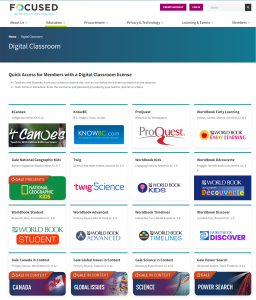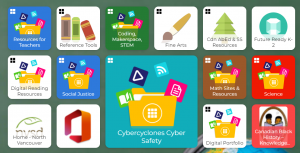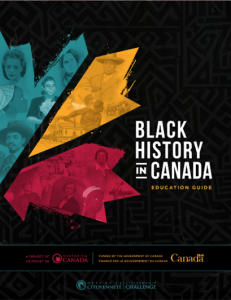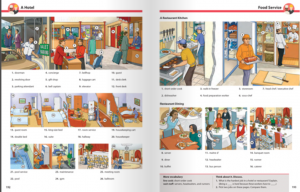When deciding on five reference tools that would be most beneficial to the students and staff in my elementary school community, I referred to Riedling et. al.’s work where they list the essential criteria for TL’s to look for when selecting reference works to add to their SLLC’s collection. Keeping the criteria in mind (content scope, accuracy, authority and bias, arrangement & presentation, timeliness/permanence, accessibility and cost) (Riedling, Shake, & and Houston, 2013) was crucial as 5 is a small number, but admittedly, a realistic one given that the budget for my SLLC is $4.30/student.
The choices must be relevant, serve the needs of all or most students and staff, be easily accessible, and cost effective. Riedling et. al. points out that, “adequate and appropriate selection and evaluation of reference materials involves consideration of specific criteria and aids or tools that may be useful in collection development” (Riedling, Shake, & and Houston, 2013).
When examining the current reference collection in my SLLC, it consists of a smattering of non-fiction topic-specific print texts that are woven within the non-fiction section and are available for circulation. Reference materials are urgently needed to assist staff in implementing the BC Curriculum with an Inquiry-Based approach, and for students to have access to materials that can provide answers to their questions and spark further curiosities.
Below, I give examples for my 5 recommendations. These are mainly compilations that house information directly (atlases, encyclopedias, dictionaries, and biographies), and are print and digitally based. My recommendations are digital encyclopedias and atlases, a picture dictionary, and digital indexes of curated reference resources.
For ease of access for students and staff regarding the digital content, I embedded the links onto my Symbaloo webmix page which would be embedded on the SLLC’s website.
Staff and students would need to open the “Reference Tools” tile in the upper left-hand corner to access the links to the recommended examples I will outline below in addition to other important reference sites.
Digital Reference Materials:
- Focused Education BC K-12 Digital Classroom: This digital reference collection is paid by the school district and does not cost the school anything to access the content. Below illustrates a screenshot of the digital page of the curated reference collection users can access.


Students and staff can access digital encyclopedias such as Gale and World Book, and access the archives of the NFB of Canada, and National Geographic Kids. The benefits of this resource are the multitude of digital resources that are kept current, the ease of access at school and home, and the cost. *Other digital encyclopedias that staff and students can access are the Canadian Encyclopedia and Britannica Education. These are not part of the curated collection found on Focused BC but are relevant and free to all users with internet access. *
This digital resource acts as an index of information for staff to access on various historical BIPOC Canadians, places of reference, and historical events. It contains links to YouTube videos, eBooks, and websites that contain information on the topic of Black History in Canada. References cited in this document range from K-12. The benefits to using this resource is relevancy and cost – it is free and easily accessible, it covers a range of topics from biographies to places of interest, historical events, and with a Canadian context.
- Explora – EBSCO: This is a user-paid access only digital reference resource. However, it covers Canadian content, and offers staff and students a relevant and user-friendly digital platform to conduct inquiries.

Explora claims to house a bank of robust curriculum-oriented, credible curated content for students and staff to conduct their research inquiries. 
Watch the short video below to view what this important resource has to offer. The benefit of this resource is the accessibility for all users in the elementary system as the content can be filtered according to Lexile reading level which is important for teachers trying to find relevant sources for their developing readers to access. I would recommend this resource in addition to the Focused Education BC curation as the interface is more user friendly for students. For example, if researching notables for a biography, the search page has a widget for biographies. Content is also organized by science/math, art/literature, geography, and so on, making it streamlined for younger students to conduct research inquiries.
- Oxford Picture Dictionary: The Oxford Picture Dictionary, 3rd edition can be purchased in e-book or print form. It boasts vivid, clear illustrations, simple text labels.
In the e-book, it is interactive with an immersive reader feature that allows users to click on a word, picture, or video to hear the pronunciation of the that word and to learn its meaning. In my school with a very high ELL student population, this resource is a must have for every classroom, and for the SLLC. The fee is low when considering the use and need of this resource amongst the whole student population. Watch the video below to view how the e-book can best serve ELL students and young emergent readers.
- First Peoples Map of BC: This digital atlas of First Peoples of BC is easily accessible via any device that can access the internet. It is free and does not require user sign in to access. It was created by the First Peoples Cultural Council. To incorporate Canadian Indigenous content into the curriculum and learning more about the diversity of Indigenous groups in BC, this reference resource is important for both staff and students to know of and use in their research.
References
Riedling, A. M., Shake, L., & and Houston, C. (2013). Reference Skills for the School Librarian: Tools and Tips (3rd ed.). Santa Barbara, California: Linworth, ABC-CLIO, LLC.






Thank you for this list of reference resources and tools! There are some here I haven’t heard of, but I agree they would be very effective in school libraries. I like that you included Canadian and First Nation people content. Such reference resources should definitely be included in a library’s reference collection. Great post!
Thank you for sharing this curated selection of digital tools! I have saved some of my favourites for future use.
Have you seen the ongoing global Indigenous mapping project at: https://native-land.ca/
Hi Sarah,
No, I haven’t seen the Indigenous mapping project. I took a quick look and it is fascinating! I will definitely use this with my class. Which resources did you find useful?
Oooo, this Indigenous global mapping project is so cool! Thanks for sharing!
Hi Linette,
Thanks for sharing these great resources. I have to say I am a little jealous of all of the resources you have available to you through Focused Education in BC. On PEI, the only database we have access to is EBSCOhost and Explora. From conversations I’ve had about these digital resources in the past with various teachers indicate that most don’t use them because they find them difficult to navigate. I wonder if this will change now that Explora has made updates to it’s design. However, I think so many teachers on PEI have already written this resource off in their minds due to poor experiences with it in the past, that it would likely take a fair bit of effort from the TLs to encourage teachers and students to give it another chance.